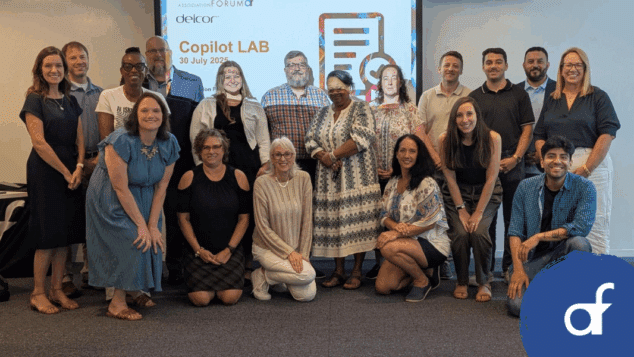Getting the Most Out of an AMS: 7 Ways to Maximize an AMS Before Making a Change

Association Management Systems (AMS) are the core technology associations rely on. Whatever application is used, the AMS has a significant impact on the member experience, revenue activities, continuing education, events, marketing, and communications.
Before changing an AMS, first look to maximize the association’s existing technology.
1. Strategic Decay | Does the AMS keep pace with the association?
Associations and non-profit membership organizations are dynamic and ever-changing. Even for long-term traditional professional associations, the pace of change required in attending to member needs often moves more quickly than the software the association uses.
Software development, even for the software-as-a-service model (SaaS) moves at a slow pace. Profits for software companies come from doing the least amount of work for the highest amount of revenue. Each feature, add-on, adjustment or function on the roadmap is an investment and a cost with an uncertain ROI. Revenue is based on doing less, not more.
Instead of keeping up with the dynamic nature of associations, software companies make tradeoffs with the type of features they offer and support. Overtime, these trade-offs can leave associations relying on technology that no longer meets the business needs of the membership community.
Identifying the change in time is referred to as strategic decay: the strategy that was used to justify an AMS, three, five, or more years ago may mean the association is relaying on out-of-date and outmoded technology.
Prevent strategic decay by asking if the association has outgrown what the AMS is able to do for your members. The strategy the executive team and board used to make the AMS choice in the past may no longer apply to an ever-changing business dynamic.
2. Business Model | Does the business model change faster than the technology?
Not sure where to start when looking at the AMS to see if it fits the need for the new model? Contact the AMS provider. In some cases, they may be able to work with the changing model and may be working towards new features to support what the association needs.
Business dynamics and revenue models used for both dues and non-dues revenue services need to be agile, productive, and able to generate results. Developing a new or revised model takes time and requires significant input for staff, the board, and members. As part of the process to change direction, make sure to check the AMS to see if the new model is supported or possibly hindered by the system itself.
Not sure where to start when looking at the AMS to see if it fits the need for the new model? Contact the AMS provider. In some cases, they may be able to work with the changing model and may be working towards new features to support what the association needs. If the association’s new model won’t work, then balance out the need to change with the ability of the AMS to change.
3. Total Cost of Ownership (TCO) | Does the association know the total cost of the technology?
The total cost of ownership (TCO) for an AMS is made of known costs and several hidden costs. Known costs include the annual service contract, support hours, and add-on fees such as web-design, member record management, and access to APIs. If the implementation cost is leveraged over the life of the three-to-five-year contract, this is another cost to consider. In many cases, the AMS implementation fee is absorbed in the first few months or within the first year of the contract.
After that, its low cost, right?
Not exactly. The hidden costs of service contracts show up in other ways. Lost time due to incomplete training, low utilization rates, limited knowledge, the need for expensive work arounds, manual processes, and consultants are just the tip of the iceberg when it comes to total AMS costs.
Other costs include changes to fees structures. Some AMS will start with a flat rate with unlimited records, then change the model to a fixed rate per record or set of records. What once started out low cost will start to add up quickly.
As a general rule of thumb, for the known costs of AMS applications, multiple by 2x or 3x to get a greater sense of the TCO. Workarounds and integrations can get complex and expensive and are detailed in the next two sections.
4. Workarounds | Does the AMS require workarounds to make the AMS work?
Many teams are unaware of how many workarounds are needed to make an AMS fully function. Workarounds are usually a manual step taken to make data from one system useful in another.
Email systems are one example of a common workaround. Many associations use email communications outside of the AMS. Constant Contact, MailChimp, HubSpot and so on have significantly more capability than many AMS applications. Contact lists ported from one system to another are a challenge, and often lead to incomplete and out of date data, duplicates, and other irregularities.
Workarounds aren’t limited to just emails. Does your team need to manually intervene to make the LMS work well with the AMS? does your team have to wrangle data in and out of event systems, mobile apps, zoom webinars, microsite logins, and so on?
Take a close look at the number of manual steps and amount of time staff needs to spend to make all the applications work well. In many cases, the work added to make the AMS function cancels out the benefit of the AMS.
Time is money, and the more manual process that can be identified and documented, the further down the road your association will be in determine if the AMS still meets the needs of the membership organization.
5. Integrations | Does the AMS work well with other systems and applications?
The more systems used for a single purpose, the higher the chance the combined system will be at risk. Integrations are the solution to connecting different systems, and between API connectors, SSO’s and custom applications and mobile apps, there is a dizzying array of possible integrations to manage, understand, and to stay on top of.
The market has yet to produce a budget friendly all-in-one AMS that can keep pace with the dynamic business needs of the association community. Many systems come close, and for many associations, the trick is to manage multiple technologies as efficiently and effectively as possible.
The more systems used for a single purpose, the higher the chance the combined system will be at risk. Integrations are the solution to connecting different systems, and between API connectors, SSO’s and custom applications and mobile apps, there is a dizzying array of possible integrations to manage, understand, and to stay on top of.
Not sure how many systems are integrated and how these all work together?
First, start with a survey of staff to determine which systems they use and which systems they don’t use. Then, track the account details, log in information, contact information, how much each one costs, how long the contract runs for, what the support agreement is and so on. While you are at it, contact the service provider for use logs and how often the API or SSO is used to connect members and systems.
Too many integrations is like a house of cards. If one system has an update or goes offline, does the whole member experience or data processing collapse as well? In the case of integrations, complexity adds to the technical risk and may undermine the benefit of the AMS. Working well with others is important for both people and AMS.
6. Staff | Is the AMS fully utilized by staff, leadership, and the board?
Utilizing an AMS to its fullest extent can be challenging. Staff change, account teams and strategy changes at the AMS, and the day to day needs of managing an association often means that small gaps in product use build over time into lost functionality.
If the software feature is not convenient, has an unappealing deign, or often doesn’t work as intended, people still need to get work done. Out will come the manual process, word documents, email templates, and spreadsheets.
Match the need to get work done with the AMS ability to deliver results. Account management and support teams at the AMS are there to help training and reinforce the use of the software. If an association does not use a feature or is unaware a feature is available, the risk to the association is inefficiency and workarounds.
For the AMS, ask the support team about utilization rates. If they are unable to tell you which features are used and how often, then they may not be tracking how useful their system actually is. If they are not able to tell you basic use rates, or help with feature that are underused, then it may be time to look for a new vendor.
7. Knowledge | Is AMS application knowledge documented?
Documentation need not be a dirty word!
Simple instructions, checklists, and how-to guides are the key to retain system knowledge and improving results. The various applications will have an online “KB” (knowledge base) that can be used to learn how to support the various business operations. What is important for each application is to know where the KB is and how it works (links, videos, free training, and so on).
For associations, a little bit goes a long away. Take the initiative to document common processes and how to perform these tasks in the AMS and other technologies. Overtime, this adds up to general operating manual. In this way, when a person leaves a role, the how-to guide does not also leave with them.
Software companies have a wide range of documentation, KB’s, and training resources. Keeping up-to-date on where these are and how to use the training can help retain retaining staff and get people up to speed more quickly.
Make a Decision
If after taking these steps to maximize the AMS, the association is still facing significant issues with technology gaps, continues to reply on manual work arounds, duplicate work, and extra costs, then start the process to acquire a new system. Acquiring a new AMS is not easy, no matter what a sales person tells you.
Take this list of seven steps to get the most out of an AMS and use it as a checklist. If three or four of these answers are negative, then it may be time to review your present AMS to get more out of it. If five or more the seven questions are negative, then consider whether or not the AMS is the right fit for your organization
If you’ve hit the lucky/unlucky seven of seven jackpot, then it is definitely time to make a change!
Tags
Related Articles
The Power of Taking the AI Journey Together
Forum’s first Microsoft Copilot Lab brought together 20 professionals to explore how smart adoption of...
Protecting Healthcare: Tackling Cyber Threats to Hospitals and Patients
The critical role of cybersecurity in healthcare and association management.
The Emergency Nurses Association Utilizes Design Thinking to Reimagine its Awards Ceremony
In a prime example of intrapreneurship, the ENA utilized design thinking to innovate within the...






